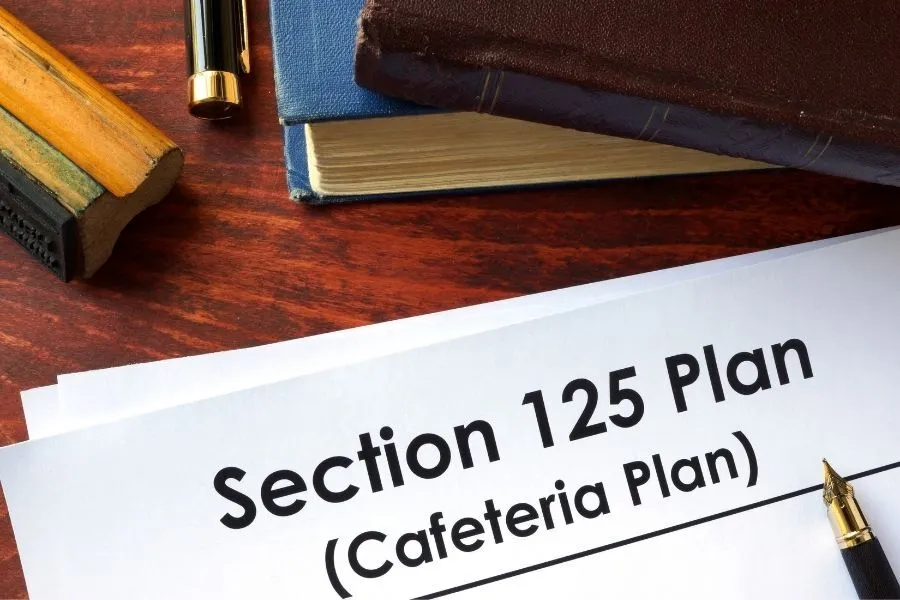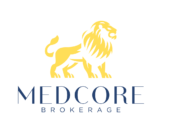Understanding Section 125 and Its Advantages for Businesses and Employees
- May 27, 2023
- Posted by: admin
- Category: Section 125

What is a Section 125 Cafeteria Plan?
A Section 125 Cafeteria Plan is an employee benefits plan authorized by the Internal Revenue Code (IRC) Section 125, which allows employees to choose from a variety of pre-tax benefit options. Unlike traditional benefit packages where employees are offered a fixed set of benefits, a cafeteria plan lets them pick and choose the benefits that best suit their individual needs. This “cafeteria” style of benefits selection is where the name comes from, as it mimics the way a cafeteria allows people to choose what they want.
The essence of a Section 125 plan is that it provides flexibility and tax advantages for both employees and employers. Employees can allocate a portion of their salary toward eligible benefits such as health insurance premiums, healthcare savings accounts (HSAs), flexible spending accounts (FSAs), dependent care, and more—before taxes are applied to their paycheck. This reduces the employee’s taxable income, resulting in tax savings. Employers benefit by reducing their payroll tax liability since the contributions are pre-tax.

How it Works
Here’s how a Section 125 Cafeteria Plan functions in practice:
- Employee Salary Reduction: Employees elect to reduce their salary by a certain amount, which is then allocated to the benefits of their choice. This is done before income taxes are deducted.
- Pre-Tax Contributions: The salary reduction contributes to benefits like health insurance premiums, flexible spending accounts, and dependent care assistance, all pre-tax.
- Tax Savings: The contributions are not subject to federal income taxes, Social Security, or Medicare taxes. This results in higher take-home pay compared to paying for the same benefits post-tax.
- Benefit Elections: Employees select their benefits during an open enrollment period, and their choices typically remain fixed for the plan year unless they experience a qualifying life event, such as the birth of a child, marriage, or divorce.
Key Features of a Section 125 Cafeteria Plan:
- Flexibility: Employees have the power to customize their benefits, choosing from a variety of options that best meet their financial and personal needs.
- Pre-Tax Contributions: By contributing to benefits with pre-tax dollars, employees save money on taxes, which can be a significant advantage.
- Employer Savings: Employers save on payroll taxes, as the amount employees defer into the cafeteria plan is not subject to Social Security and Medicare taxes.
By offering a Section 125 cafeteria plan, companies can make their benefits package more attractive, flexible, and cost-effective. Employees appreciate the ability to tailor their benefits, while employers enjoy savings and a more engaged workforce.
Frequently Asked Questions (FAQ) About Section 125 Cafeteria Plans
To further expand your article, here’s a FAQ section you can include, addressing common questions that employers and employees might have about Section 125 cafeteria plans:
1. What is a Section 125 Cafeteria Plan?
A Section 125 Cafeteria Plan allows employees to choose from a variety of pre-tax benefits offered by their employer, including health insurance premiums, flexible spending accounts (FSAs), dependent care assistance, and more. It reduces taxable income for the employee and provides tax savings for both the employer and employee.
2. What are the benefits of a Section 125 Cafeteria Plan?
The key benefit is tax savings. Employees can use pre-tax dollars to pay for eligible benefits, which lowers their taxable income. For employers, a cafeteria plan can reduce payroll taxes. Additionally, these plans provide flexibility for employees to select benefits that match their needs.
3. What types of benefits can be included in a Section 125 Cafeteria Plan?
Common benefits include:
- Health insurance premiums
- Flexible Spending Accounts (FSAs)
- Health Savings Accounts (HSAs)
- Dependent care assistance
- Group term life insurance
- Adoption assistance
Each benefit is paid for with pre-tax dollars, reducing the employee’s taxable income.
4. Can employees change their benefit selections during the year?
Typically, employees are only able to change their benefit elections during the open enrollment period. However, there are exceptions for qualifying life events, such as marriage, divorce, the birth of a child, or changes in employment status. These events allow employees to adjust their elections outside the usual window.
5. How does a Section 125 Cafeteria Plan save employees money?
By contributing to benefits with pre-tax dollars, employees lower their taxable income, which reduces the amount of federal income tax, Social Security, and Medicare taxes they pay. This can result in significant tax savings, especially for those who participate in multiple pre-tax benefits like FSAs and health insurance.
6. What are the employer’s responsibilities in managing a Section 125 Cafeteria Plan?
Employers must comply with IRS regulations, including ensuring that the plan is documented and that nondiscrimination tests are passed. They are also responsible for maintaining accurate records, handling payroll deductions, and providing employees with timely information regarding their benefit options.
7. Do Section 125 Cafeteria Plans require IRS approval?
No, cafeteria plans do not require prior IRS approval. However, they must follow IRS guidelines, including providing a written plan document outlining the terms and conditions. Employers are also responsible for keeping the plan in compliance with applicable regulations, including nondiscrimination testing.
8. What is nondiscrimination testing for a Section 125 Plan?
Nondiscrimination testing ensures that the benefits under a Section 125 Cafeteria Plan are not disproportionately favoring highly compensated employees, shareholders, or key individuals over other employees. Employers must conduct these tests annually to remain compliant with IRS regulations.
9. Are there limits on how much can be contributed to certain benefits within a Section 125 Plan?
Yes, specific benefits like Flexible Spending Accounts (FSAs) and Dependent Care Assistance Programs (DCAPs) have annual contribution limits set by the IRS. For example, the maximum FSA contribution in 2024 is $3,050, and the maximum for dependent care assistance is $5,000 per household.
10. What happens to unused FSA funds at the end of the year?
Unused funds in a healthcare FSA typically do not roll over unless the employer offers a rollover option or grace period. Without these provisions, employees risk forfeiting unused funds at the end of the plan year. Dependent care FSAs do not allow rollovers, so employees must use those funds by the deadline or lose them.
11. How does a Section 125 Cafeteria Plan affect the Affordable Care Act (ACA) requirements?
Section 125 plans must comply with ACA regulations, especially regarding offering minimum essential coverage. Employers with 50 or more full-time equivalent employees must ensure their health plans, including those offered through a cafeteria plan, meet ACA standards to avoid penalties.
12. Can small businesses offer a Section 125 Cafeteria Plan?
Yes, small businesses can offer a Section 125 cafeteria plan. It provides a way to offer competitive benefits packages that attract and retain employees while also offering tax savings. Even businesses with as few as 10 employees can benefit from implementing these plans.
13. What are the risks of not maintaining compliance with a Section 125 Plan?
Failure to comply with IRS regulations, including nondiscrimination rules and proper documentation, can result in the plan losing its tax-advantaged status. This could mean that contributions become taxable for employees and employers, which would eliminate the plan’s primary benefit.
14. What are qualifying life events, and how do they impact cafeteria plan elections?
Qualifying life events are significant changes in an employee’s life that allow them to modify their benefit elections outside of the standard open enrollment period. These events include marriage, divorce, the birth or adoption of a child, and changes in employment status. After such an event, employees typically have a limited window to update their elections.
15. Are there any limitations on the types of benefits that can be offered under a Section 125 Plan?
Yes, Section 125 plans cannot include certain benefits like long-term care insurance, employer-provided meals or lodging, and some fringe benefits. Only specific, IRS-approved benefits, such as health insurance, FSAs, and dependent care assistance, are eligible for pre-tax treatment.
This FAQ section can easily add depth to your article while addressing common concerns, helping both employers and employees better understand the benefits and mechanics of Section 125 cafeteria plans.
Check out our articles page to find all of the other articles

